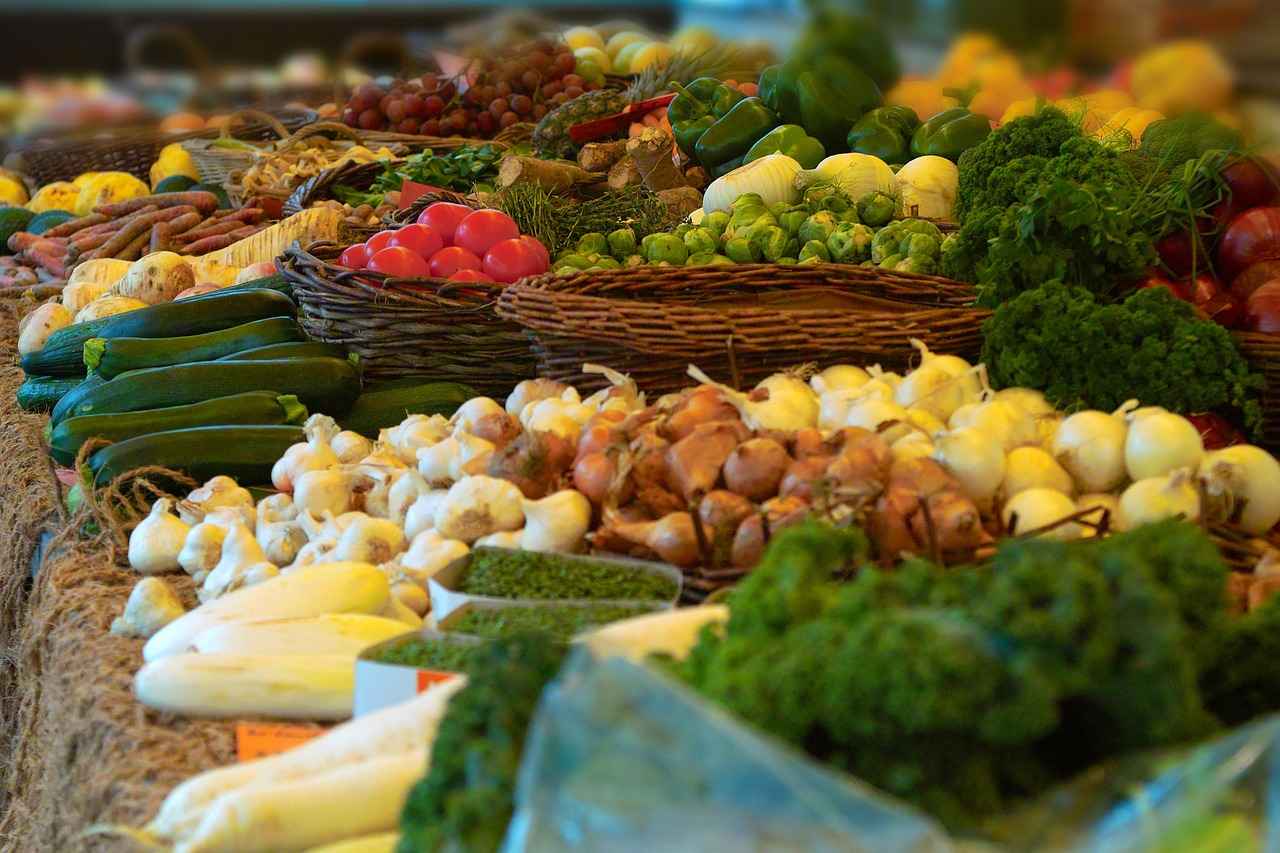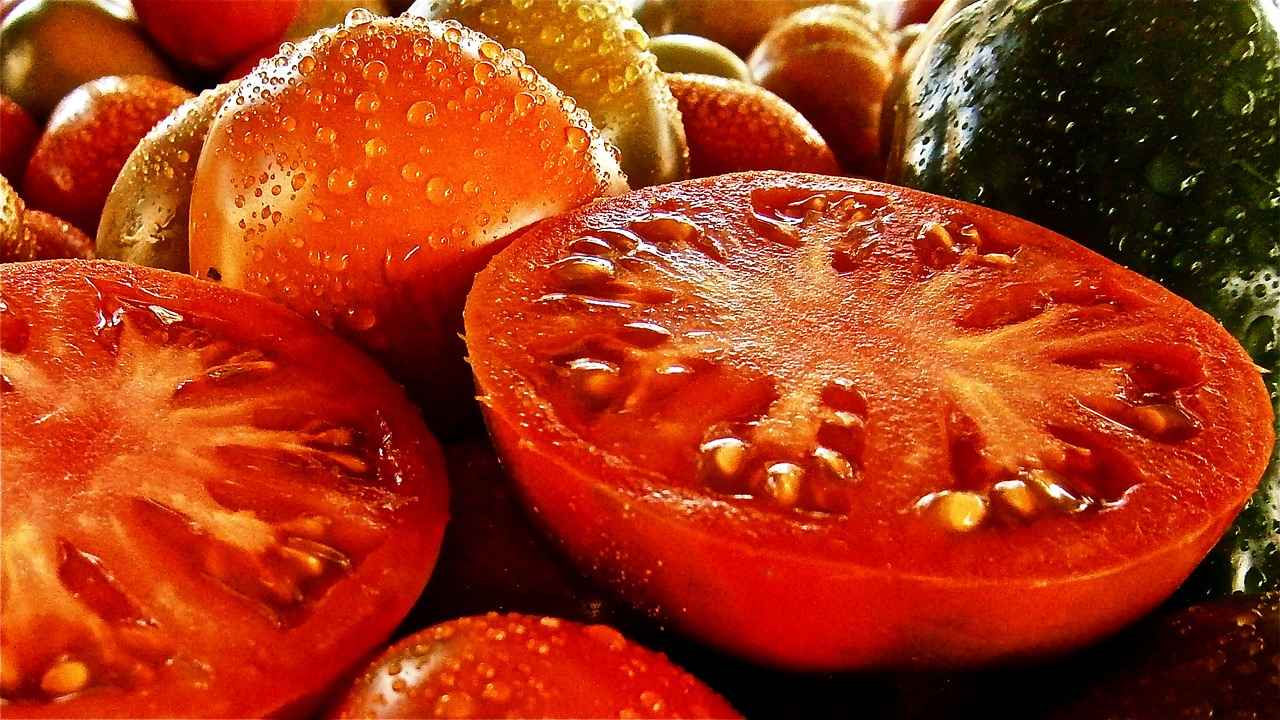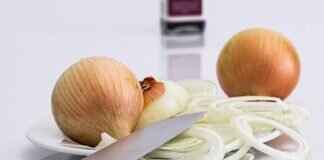This article explores the best practices for using vegetable choppers, ensuring you achieve perfectly sliced vegetables with ease and efficiency. Discover tips, techniques, and insights for optimal results.
Vegetable choppers are essential tools in any kitchen, designed to simplify the process of preparing fresh produce. By understanding the different types of choppers available, you can select one that best fits your cooking style.
- Manual Choppers: These are typically budget-friendly and require no electricity. They are easy to use and ideal for quick chopping tasks.
- Electric Choppers: Known for their speed and efficiency, electric choppers can handle larger volumes of vegetables, making them perfect for meal prep.
- Food Processor Attachments: These versatile tools can chop, slice, and dice, offering multiple functions in one appliance.
When choosing a vegetable chopper, consider factors such as size, blade type, and ease of cleaning. A well-chosen chopper not only saves time but also enhances your cooking experience.
To use a vegetable chopper effectively, start by preparing your vegetables. Wash them thoroughly and cut them into manageable sizes. This ensures a smooth chopping process and prevents damage to the chopper.
Different vegetables require varying chopping techniques:
- Slicing: Ideal for cucumbers and bell peppers.
- Dicing: Perfect for onions and tomatoes.
- Mincing: Best for garlic and herbs.
Maintaining your vegetable chopper is crucial for its longevity. Regular cleaning prevents buildup, while proper storage keeps it in good condition. Always refer to the manufacturer’s guidelines for specific care instructions.
Lastly, avoid common mistakes such as overloading the chopper or neglecting safety features. Portion control is vital for achieving even cuts and protecting your kitchen tools.
In conclusion, with the right knowledge and techniques, using a vegetable chopper can transform your cooking experience. Embrace these tips for perfectly sliced vegetables that enhance your meals and save time in the kitchen.

Understanding Vegetable Choppers
In today’s fast-paced world, vegetable choppers have become essential kitchen tools that streamline meal preparation. These handy devices come in various types, each designed to cater to different cooking styles and preferences. Understanding the different types of vegetable choppers available on the market, alongside their unique features, can significantly simplify your cooking process.
- Manual Vegetable Choppers: These are typically more affordable and require no electricity. They are perfect for those who prefer a hands-on approach. Manual choppers often have simple mechanisms, such as pull cords or lever systems, allowing for easy operation.
- Electric Vegetable Choppers: For those who prioritize speed and efficiency, electric choppers are an excellent choice. They can quickly chop, slice, or dice a variety of vegetables with minimal effort. Most electric models come with adjustable settings to achieve different cuts.
- Food Processor Attachments: Many modern food processors come equipped with vegetable chopping attachments. These versatile tools can handle multiple tasks, including chopping, slicing, and pureeing, making them a valuable addition to any kitchen.
When selecting a vegetable chopper, consider features such as blade quality, size, and ease of cleaning. High-quality stainless steel blades are essential for durability and efficiency, while compact designs can save space in your kitchen.
In conclusion, understanding the various types of vegetable choppers and their features can greatly enhance your cooking experience. By choosing the right chopper, you can simplify meal prep, save time, and enjoy perfectly sliced vegetables every time.

Choosing the Right Vegetable Chopper
Selecting the ideal vegetable chopper can indeed be overwhelming, given the myriad of options available on the market. To make an informed decision, it’s essential to consider several key factors that can greatly affect your cooking experience.
- Size: The size of the vegetable chopper is crucial. If you have a small kitchen or limited storage space, a compact chopper might be the best choice. However, if you often prepare meals for a large family or enjoy entertaining, a larger model may save you time and effort.
- Blade Type: The type of blades used in the chopper can significantly impact the quality of the cut. Look for choppers with sharp, durable stainless steel blades that can handle various vegetables. Some models come with interchangeable blades, allowing you to slice, dice, or julienne as needed.
- Ease of Cleaning: After a busy cooking session, the last thing you want is to struggle with cleaning. Choose a vegetable chopper that is easy to disassemble and dishwasher safe. This feature not only saves time but also ensures proper hygiene.
- Durability: Investing in a sturdy chopper made from high-quality materials can save you money in the long run. Check for user reviews and ratings to gauge the durability of the product.
- Safety Features: Safety should always be a priority. Look for choppers with safety locks or non-slip bases to prevent accidents while in use.
By carefully evaluating these factors, you can choose a vegetable chopper that not only meets your culinary needs but also enhances your overall cooking experience. Remember, the right tool can make all the difference in achieving perfectly sliced vegetables every time!
Types of Vegetable Choppers
When it comes to preparing vegetables efficiently, choosing the right type of vegetable chopper can make all the difference. There are several options available, each with its own set of features and benefits. Below, we explore three main types of vegetable choppers: manual, electric, and food processor attachments. Understanding these options will help you find the best fit for your kitchen needs.
- Manual Choppers:
Manual vegetable choppers are often the go-to choice for those who prefer a hands-on approach to cooking. They are typically budget-friendly and require no electricity, making them ideal for quick tasks or outdoor cooking. These choppers are easy to clean and store, but they do require some physical effort to operate.
- Electric Choppers:
For those who value speed and convenience, electric vegetable choppers are an excellent option. These devices can quickly chop, slice, or dice a variety of vegetables with just the push of a button. They often come with multiple settings for different types of cuts, which can significantly enhance your meal prep experience. However, they tend to be more expensive and require careful cleaning to maintain their functionality.
- Food Processor Attachments:
If you already own a food processor, consider investing in vegetable chopper attachments. These can transform your food processor into a versatile chopping machine. They typically offer a range of blade options and can handle larger quantities of vegetables at once, making them perfect for batch cooking. However, they may require more space for storage and can be more complex to clean.
In conclusion, the choice of vegetable chopper depends largely on your cooking habits and kitchen space. By understanding the advantages and disadvantages of each type, you can select the one that best suits your needs, ensuring that your vegetable preparation is both efficient and enjoyable.
Manual Choppers
Manual vegetable choppers are an excellent choice for those seeking a budget-friendly and user-friendly option in the kitchen. These tools are designed to simplify the chopping process, making meal preparation quicker and more efficient.
One of the primary advantages of manual choppers is their affordability. Compared to electric models, manual choppers typically come at a lower price point, making them accessible for various budgets. Additionally, they are often lightweight and compact, which means they can be easily stored in small kitchens without taking up much space.
Another significant benefit of using manual choppers is their ease of use. With no need for electricity, these choppers can be utilized anywhere, whether you’re camping, picnicking, or simply preparing a meal at home. Most manual choppers require minimal effort; just place the vegetables inside, pull the cord or press down, and watch as your ingredients are chopped uniformly.
However, it is essential to consider some potential drawbacks. For instance, manual choppers may require more physical effort than electric ones, which could be a challenge for individuals with limited hand strength or mobility issues. Furthermore, while they are great for chopping, they may not be as versatile as electric choppers that offer multiple functions such as pureeing or mixing.
In summary, manual vegetable choppers present a practical solution for everyday cooking. They are affordable, portable, and easy to operate, making them a valuable addition to any kitchen. However, potential users should weigh the physical demands and limitations of these choppers against their cooking needs to determine if they are the right fit.
Electric Choppers
have revolutionized the way we prepare meals, providing an unmatched combination of speed and convenience. These kitchen gadgets are designed to make chopping, dicing, and mincing vegetables a breeze, allowing home cooks to save precious time in the kitchen. In this article, we will delve into the various features and benefits of electric choppers, and how they can significantly enhance your meal prep experience.
Electric choppers are not just about cutting down on prep time; they also offer a range of advantages that can improve your cooking efficiency:
- Consistency: Electric choppers ensure uniform cuts, which can enhance the presentation of your dishes.
- Speed: With the push of a button, you can chop vegetables in seconds, making them ideal for busy weeknight dinners.
- Versatility: Many electric choppers come with multiple blade options, allowing you to slice, dice, and even puree various ingredients.
- Ease of Use: Most models are user-friendly and require minimal effort, making them suitable for cooks of all skill levels.
When selecting an electric chopper, there are several features to keep in mind:
- Capacity: Choose a chopper that fits your cooking needs, whether you’re preparing meals for one or a large family.
- Blade Quality: Look for high-quality stainless steel blades that can withstand frequent use.
- Safety Features: Ensure the chopper has safety locks and non-slip bases to prevent accidents during use.
Integrating an electric chopper into your cooking routine can transform the way you prepare meals. By reducing the time spent on chopping, you can focus on other aspects of cooking, such as seasoning and presentation. Additionally, with the ability to quickly prepare large quantities of vegetables, you can easily meal prep for the week ahead, ensuring healthy eating is both convenient and achievable.
In conclusion, electric choppers are a valuable addition to any kitchen. Their ability to provide speed, consistency, and versatility makes them an essential tool for enhancing your meal prep experience. By understanding their features and benefits, you can make an informed decision and enjoy perfectly sliced vegetables every time.
Key Features to Look For
When selecting a vegetable chopper, it is essential to consider several key features that can enhance usability and performance. Understanding these characteristics will help you make an informed decision, ensuring that your cooking experience is both efficient and enjoyable.
- Blade Quality: The effectiveness of a vegetable chopper largely depends on its blades. Look for stainless steel blades that offer durability and sharpness. Sharp blades make chopping easier and quicker, allowing for cleaner cuts.
- Size and Capacity: Consider the size of the chopper, especially if you have limited kitchen space. Additionally, the capacity of the chopper is crucial; a larger bowl can handle more vegetables, which is ideal for meal prep.
- Ease of Use: A user-friendly design is vital. Look for choppers with comfortable grips and intuitive mechanisms. Some models feature a pull cord or a simple press-down function that can significantly reduce the effort required during chopping.
- Cleaning and Maintenance: A chopper that is easy to disassemble and clean will save you time and effort. Check if the components are dishwasher safe, as this can make maintenance much simpler.
- Safety Features: Safety should always be a priority. Look for choppers that come with features like non-slip bases and safety guards to prevent accidental cuts.
- Versatility: Some vegetable choppers come with interchangeable blades or additional attachments for slicing, dicing, and even grating. This versatility can enhance your cooking options and make the chopper more valuable in your kitchen.
By focusing on these essential features, you can choose a vegetable chopper that not only meets your culinary needs but also enhances your overall cooking experience.

How to Use a Vegetable Chopper Effectively
Mastering the technique of using a vegetable chopper can significantly elevate your cooking experience. With the right approach, you can achieve perfectly sliced vegetables that enhance the flavors and presentation of your dishes. This guide offers step-by-step instructions to help you utilize your vegetable chopper with confidence and efficiency.
Step 1: Prepare Your Vegetables
- Wash: Rinse all vegetables under cold water to remove dirt and pesticides.
- Peel: For certain vegetables, like carrots or potatoes, peeling may be necessary.
- Cut to Size: Chop larger vegetables into manageable pieces to fit into the chopper easily.
Step 2: Set Up Your Vegetable Chopper
Ensure your vegetable chopper is clean and assembled correctly. If using an electric model, plug it in and check that the blades are securely attached.
Step 3: Chopping Techniques
- Slicing: For items like cucumbers or bell peppers, use a steady downward motion for even slices.
- Dicing: To create uniform cubes, first slice the vegetable, then rotate and chop again.
- Mincing: For herbs or garlic, use a quick pulsing motion to achieve a fine chop.
Step 4: Clean Up
After use, disassemble your chopper and wash all removable parts in warm, soapy water. Ensure that the blades are handled with care to avoid injury.
Conclusion: By following these steps, you can master the use of your vegetable chopper, resulting in perfectly sliced vegetables every time. This not only enhances the visual appeal of your meals but also saves you time in the kitchen, allowing you to focus on creating delicious dishes.
Preparation Tips
Preparing your vegetables before chopping can make a significant difference in the efficiency and quality of your meal prep. Here are some essential tips for washing, peeling, and cutting vegetables to ensure they are ready for your culinary creations.
- Washing Vegetables: Always start by washing your vegetables thoroughly under running water. This step is crucial for removing dirt, pesticides, and bacteria. For leafy greens, consider soaking them in a bowl of water and then rinsing to dislodge any hidden dirt.
- Peeling Techniques: Some vegetables, like carrots and potatoes, benefit from peeling. Use a sharp vegetable peeler to remove the skin efficiently. Remember, peeling can sometimes remove valuable nutrients, so assess whether it’s necessary based on the vegetable type.
- Cutting to Size: Cut your vegetables into uniform sizes to ensure even cooking. For instance, when chopping onions, dice them into small, consistent pieces to promote even caramelization. Use a sharp knife to make clean cuts, which will also enhance the presentation of your dishes.
- Organizing Your Workspace: Keep your workspace clean and organized. Use a cutting board that provides stability, and have a bowl ready for scraps. This practice not only keeps your area tidy but also speeds up the chopping process.
By following these preparation tips, you can streamline your cooking process and enhance the flavors and textures of your dishes. Properly prepared vegetables not only look better but also cook more evenly, leading to a more enjoyable dining experience.
Chopping Techniques
When it comes to preparing vegetables, mastering various chopping techniques is essential for achieving the desired texture and presentation in your dishes. Each type of vegetable has its own specific needs, and using the right method can enhance both the flavor and visual appeal of your meals.
- Slicing: This technique involves cutting vegetables into thin, even pieces. It’s ideal for vegetables like bell peppers, cucumbers, and tomatoes. To slice effectively, hold the vegetable steady with one hand while using a sharp knife to create uniform slices. Aim for a thickness of about 1/8 inch for optimal cooking and presentation.
- Dicing: Dicing is the process of cutting vegetables into small cubes, making it perfect for ingredients like onions, carrots, and potatoes. Start by slicing the vegetable lengthwise into strips, then rotate and slice across to create cubes. For a fine dice, ensure your pieces are small and uniform, which aids in even cooking.
- Mincing: This technique is used for finely chopping herbs and garlic to release their essential oils and flavors. To mince, first, chop the herb or garlic into small pieces, then use a rocking motion with the knife to create even smaller bits. This method is great for adding depth to sauces and marinades.
- Julienne: Julienne cuts involve slicing vegetables into thin matchstick shapes, commonly used for carrots and zucchini. Begin by cutting the vegetable into manageable lengths, then slice into thin strips. This technique not only enhances the dish’s texture but also adds a decorative touch.
- Chiffonade: This method is primarily used for leafy greens and herbs. Stack the leaves, roll them tightly, and slice across to create thin ribbons. Chiffonade is perfect for garnishing and adding a fresh touch to salads or soups.
By understanding and utilizing these different chopping techniques, you can elevate your culinary skills and create beautifully presented dishes that are sure to impress. Remember, practice makes perfect, so don’t hesitate to experiment with various vegetables and cutting styles!

Maintaining Your Vegetable Chopper
Proper maintenance is essential to ensure that your vegetable chopper remains in top condition throughout its lifespan. By following a few simple practices, you can keep your chopper functioning optimally and prolong its usability. This section covers key aspects of maintenance, including cleaning, storage, and care tips that will enhance your chopper’s performance.
Cleaning Your Chopper
Regular cleaning is vital for maintaining hygiene and preventing food buildup in your vegetable chopper. Here are some recommended cleaning practices:
- Disassemble: Start by disassembling your chopper according to the manufacturer’s instructions. This allows for a thorough cleaning of all components.
- Hand Wash: Use warm, soapy water to wash the parts. A soft sponge is ideal to avoid scratching the surfaces.
- Sanitize: For added hygiene, consider using a vinegar-water solution to sanitize the blades and other parts.
- Dry Completely: Ensure that all parts are completely dry before reassembling. This helps prevent rust and mold.
Storage Solutions
Proper storage is crucial to protect your vegetable chopper from damage and ensure it is readily accessible when needed. Here are some practical storage solutions:
- Designated Space: Allocate a specific area in your kitchen for your chopper, away from heavy items that could cause damage.
- Use a Protective Cover: If your chopper comes with a cover, use it to shield it from dust and accidental scratches.
- Keep Blades Covered: Always ensure that the blades are covered or stored safely to prevent accidental cuts.
Care Tips
In addition to cleaning and storage, consider the following care tips to enhance the longevity of your vegetable chopper:
- Avoid Overloading: Stick to recommended quantities when chopping to prevent strain on the motor or blades.
- Regular Inspections: Periodically check for any signs of wear or damage, particularly on the blades, and replace parts as necessary.
- Follow Manufacturer Guidelines: Always refer to the user manual for specific maintenance advice tailored to your model.
By implementing these maintenance practices, you can ensure that your vegetable chopper remains in excellent working condition, making meal prep quicker and more efficient.
Cleaning Your Chopper
Maintaining a clean vegetable chopper is essential not only for hygiene but also for ensuring its longevity and optimal performance. Over time, food residue can accumulate, leading to potential contamination and decreased efficiency. Here are some effective cleaning practices tailored for various types of vegetable choppers:
- Manual Choppers: For manual choppers, start by disassembling the parts. Rinse any removable components under warm water to remove food particles. Use a soft sponge and mild detergent to scrub the blades and bowl. Avoid abrasive materials that could damage the surface. Rinse thoroughly and allow to air dry.
- Electric Choppers: Before cleaning, ensure the device is unplugged. Wipe the exterior with a damp cloth. For the bowl and blades, follow similar steps as with manual choppers, but be cautious around electrical components. If the bowl is dishwasher-safe, place it on the top rack for a thorough clean.
- Food Processor Attachments: If your vegetable chopper is an attachment for a food processor, it usually has specific cleaning instructions. Generally, disassemble the parts and wash them in warm, soapy water or place them in the dishwasher. Ensure all parts are completely dry before reassembling.
To maintain hygiene, it’s advisable to clean your chopper immediately after use. This practice not only prevents the buildup of stubborn residues but also ensures that your chopper is ready for the next meal prep. Additionally, regularly check the blades for any signs of wear or damage, as dull blades can lead to uneven cuts and may require replacement.
By following these cleaning guidelines, you can ensure that your vegetable chopper remains in excellent condition, providing you with perfectly sliced vegetables every time.
Storage Solutions
Properly storing your vegetable chopper is essential for maintaining its functionality and extending its lifespan. By implementing effective storage solutions, you can prevent damage and ensure that your chopper is always within reach when you need it. This section outlines various practical strategies tailored to different kitchen setups.
- Designated Storage Space: Assign a specific cabinet or drawer for your vegetable chopper. This keeps it organized and safe from potential damage caused by other kitchen tools.
- Use Protective Covers: If your chopper comes with a protective cover, use it! This will shield the blades from dulling and protect the device from dust and debris.
- Magnetic Strips: For those with limited counter space, consider installing a magnetic strip on the wall. This allows you to hang your chopper, keeping it easily accessible while saving valuable space.
- Drawer Organizers: Utilize drawer organizers or dividers to keep your chopper and its accessories neatly arranged. This prevents them from shifting around and potentially getting damaged.
- Vertical Storage: If your vegetable chopper is compact, you can store it vertically in a container or a stand. This not only saves space but also makes it easy to grab when needed.
In addition to these storage solutions, consider the layout of your kitchen. If you frequently use your chopper, keep it in a spot that is convenient for meal prep. Conversely, if you use it less often, a higher shelf or less accessible area may be appropriate.
Ultimately, the goal is to create a storage system that suits your cooking habits and kitchen design. By investing a little time into organizing your tools, you can enhance your cooking experience and ensure that your vegetable chopper remains in excellent condition for years to come.

Common Mistakes to Avoid
Even seasoned cooks can make mistakes with vegetable choppers. Understanding these common pitfalls is essential for achieving the best results in your kitchen. This section identifies frequent errors and offers practical advice on how to avoid them, ensuring that you make the most of your vegetable chopper.
- Overloading the Chopper: One of the most common mistakes is overloading your vegetable chopper. When you try to chop too many vegetables at once, it can lead to uneven cuts and may even damage the blades. To avoid this, always adhere to the recommended portion sizes for your specific chopper model. It’s better to chop in batches for consistent results.
- Ignoring Safety Features: Safety should always be a priority when using kitchen tools. Many vegetable choppers come equipped with safety features, such as locking mechanisms and protective covers. Neglecting these can lead to accidents. Always familiarize yourself with the safety features of your chopper and use them as intended.
- Not Preparing Vegetables Properly: Preparing your vegetables before chopping is crucial. Failing to wash, peel, or cut them into manageable sizes can hinder the chopping process. Ensure that your vegetables are clean and cut into appropriate sizes to facilitate even chopping.
- Using Dull Blades: Blades that are not sharp can cause more damage than good. Dull blades can crush rather than slice, resulting in a mushy texture. Regularly check the condition of your blades and sharpen or replace them as needed to maintain optimal performance.
- Neglecting Cleaning and Maintenance: After using your vegetable chopper, it’s essential to clean it properly. Neglecting to do so can lead to food buildup, which can harbor bacteria. Always follow the manufacturer’s cleaning instructions and store your chopper in a dry place to prolong its lifespan.
By being aware of these common mistakes and taking proactive measures, you can significantly enhance your vegetable chopping experience. Embrace these tips to ensure that every meal preparation is efficient and enjoyable.
Overloading the Chopper
Overloading your vegetable chopper can significantly affect its performance and longevity. When you cram too many vegetables into the chopper at once, you risk uneven cuts, which can lead to inconsistent cooking times and textures in your meals. This is particularly important when preparing dishes that require uniformity, such as stir-fries or salads.
Moreover, overloading can put unnecessary strain on the motor and blades, potentially causing damage. Most vegetable choppers are designed with specific capacity limits to ensure optimal performance. Exceeding these limits can result in blunt blades, which not only diminish cutting efficiency but can also make the chopper more challenging to clean.
- Portion Control: It’s essential to cut your vegetables into manageable sizes before placing them in the chopper. This not only promotes even chopping but also helps maintain the integrity of the chopper itself.
- Batch Processing: Instead of overloading, consider processing your vegetables in smaller batches. This technique ensures that each piece is chopped uniformly and allows for better control over the final product.
- Consult the Manual: Always refer to the manufacturer’s guidelines for maximum capacity. Following these recommendations will help you avoid damage and extend the life of your appliance.
In conclusion, practicing portion control while using your vegetable chopper is crucial for achieving the best results. By being mindful of the amount you load, you not only enhance the quality of your food preparation but also protect your kitchen equipment from unnecessary wear and tear. Embrace these habits to ensure your cooking experience is both enjoyable and efficient.
Ignoring Safety Features
when using kitchen tools can lead to accidents and injuries. It’s crucial to prioritize safety, especially when chopping vegetables with a vegetable chopper. This section elaborates on essential safety features and best practices to ensure a safe cooking experience.
First and foremost, always ensure that your vegetable chopper has non-slip feet. This feature helps keep the chopper stable during use, preventing it from sliding off the counter, which can lead to serious accidents. Additionally, consider choppers with a protective cover for the blades. This not only protects the blades when not in use but also minimizes the risk of accidental cuts during handling.
Another important aspect to consider is the blade safety. Make sure the blades are securely attached and that the chopper has a mechanism to prevent accidental activation. Some electric choppers come equipped with safety locks that ensure the device does not operate unless properly assembled. Always check for these features when selecting your chopper.
When using a vegetable chopper, it’s essential to follow proper chopping techniques. Always keep your fingers away from the blades and use the provided safety pusher or guard to guide the vegetables into the chopper. This practice not only ensures even cuts but also protects your hands from injury.
Moreover, be mindful of cleaning and maintenance. After each use, make sure to clean the chopper thoroughly, as food particles can become a breeding ground for bacteria. Use a soft brush or cloth to clean the blades and ensure they remain sharp and effective. Proper maintenance extends the life of your chopper and keeps it safe to use.
In conclusion, safety should never be compromised in the kitchen. By understanding and utilizing the safety features of your vegetable chopper, you can enjoy a more secure cooking experience. Always remember that a little caution goes a long way in preventing accidents and ensuring a fun, efficient cooking environment.

Conclusion: Enjoying Perfectly Sliced Vegetables
Using a vegetable chopper can significantly enhance your cooking experience by making meal preparation quicker and more efficient. With the right knowledge and techniques, you can achieve perfectly sliced vegetables that not only look appealing but also elevate the flavors of your dishes. Here are some essential tips to help you maximize the benefits of your vegetable chopper.
Understanding Your Vegetable Chopper
Before diving into the chopping process, it’s crucial to understand how your vegetable chopper works. Familiarize yourself with its components, including the blades and the container, to ensure you use it effectively. Knowing the specific features of your chopper can help you utilize it to its full potential.
Preparation is Key
- Wash: Always wash your vegetables thoroughly to remove any dirt or pesticide residue.
- Peel: Depending on the vegetable, peeling may be necessary for better taste and texture.
- Cut to Size: Pre-cutting larger vegetables into smaller pieces can prevent overloading the chopper, ensuring even slices.
Chopping Techniques
Different vegetables require different chopping techniques. For instance, hard vegetables like carrots may need more force, while soft vegetables like tomatoes require a gentle touch. Experiment with your chopper to find the best method for each type of produce.
Maintenance for Longevity
To keep your vegetable chopper in excellent condition, regular maintenance is essential. Clean it thoroughly after each use to prevent food buildup, which can affect performance and hygiene. Store it in a dry place to avoid rust and damage.
Common Mistakes to Avoid
- Overloading: Avoid placing too many vegetables in the chopper at once. This can lead to uneven cuts and may damage the blades.
- Ignoring Safety Features: Always use the safety features provided with your chopper to minimize the risk of injury.
Conclusion
By embracing these tips and techniques, you can transform your cooking experience with a vegetable chopper. Not only will you save time in the kitchen, but you will also enjoy the benefits of perfectly sliced vegetables that enhance the flavor and presentation of your meals.
Frequently Asked Questions
- What types of vegetables can I chop with a vegetable chopper?
You can chop a wide variety of vegetables, including onions, carrots, bell peppers, and even softer ones like tomatoes. Just remember that different vegetables may require different chopping techniques!
- How do I clean my vegetable chopper after use?
Cleaning your vegetable chopper is simple! Most manual choppers can be rinsed under warm water, while electric ones may require a damp cloth for the body and a thorough wash for removable parts. Always check the manufacturer’s instructions for specific guidance.
- Can I use a vegetable chopper for fruits?
Absolutely! Many vegetable choppers can also handle fruits like apples, pears, and berries. Just be cautious with very soft fruits, as they might get mushy if chopped too finely.
- Is it safe to use an electric vegetable chopper?
Yes, electric vegetable choppers are generally safe to use, but always follow safety guidelines. Ensure your hands are dry when operating, and never put your fingers near the blades!
- How do I choose the right vegetable chopper for my kitchen?
Consider factors like your cooking needs, kitchen space, and budget. Manual choppers are great for small tasks, while electric ones are perfect for larger quantities. Think about what will make your cooking experience easier!














